
 |
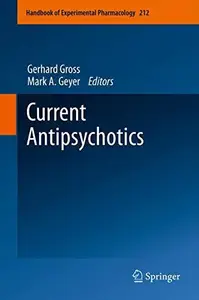 Free Download Current Antipsychotics By Rebecca Kuepper, Mette Skinbjerg, Anissa Abi-Dargham (auth.), Gerhard Gross, Mark A. Geyer (eds.) 2012 | 418 Pages | ISBN: 3642257607 | PDF | 4 MB Six decades after the serendipitous discovery of chlorpromazine as an antipsychotic and four decades after the launch of clozapine, the first atypical or second generation antipsychotic, psychopharmacology has arrived at an important crossroad. It is clear that pharmacological research and pharmaceutical development must now focus on complementary or even alternative mechanisms of action to address unmet medical needs, i.e. poorly treated domains of schizophrenia, improved acceptance by patients, better adherence to medication, safety in psychoses in demented patients, and avoiding cardiac and metabolic adverse effects. The first completely novel mechanisms evolving from our insights into the pathophysiology of psychotic disorders, especially the role of glutamatergic mechanisms in schizophrenia, are now under development, and further principles are on the horizon. This situation, in many respects similar to that when the initial second-generation antipsychotics became available, can be rewarding for all. Preclinical and clinical researchers now have the opportunity to confirm their hypotheses and the pharmaceutical industry may be able to develop really novel classes of therapeutics. When we were approached by the ✅Publishers of the Handbook of Experimental Pharmacology to prepare a new volume on antipsychotics, our intention was to capture both, the accumulated preclinical and clinical knowledge about current antipsychotics as well as prospects for new and potentially more specific antischizophrenia principles. These efforts should be based on the pathophysiology of the diseases and the affected neurotransmitter systems. Since preclinical research on antipsychotic compounds is only reliable when intimately linked through translational aspects to clinical results, we decided to include clinical science as well. It turned out that that this endeavor could not be covered by a single volume. We thank the editorial board and the ✅Publishers for supporting our decision to prepare two volumes: Current Antipsychotics and Novel Antischizophrenia Treatments. These topics cannot really be separated from one another and should be seen as a composite entity despite the somewhat arbitrary separation of contributions into two volumes. The continuing challenges of developing improved and safer antipsychotic medications remain of concern and are discussed in the first volume. The new opportunities for the field to develop and license adjunctive treatments for the negative symptoms and cognitive deficits that are treated inadequately by existing compounds have been incentivized recently and provide the focus for the second volume. We hope these collective contributions will facilitate the development of improved treatments for the full range of symptomatology seen in the group of schizophrenias and other major psychotic disorders.Gerhard Gross, Ludwigshafen, GermanyMark A. Geyer, La Jolla, CAThis volume will try to put current therapy - achievements, shortcomings, remaining medical needs - and emerging new targets into the context of increasing knowledge regarding the genetic and neurodevelopmental contributions to the pathophysiology of schizophrenia. Some of the chapters will also deal with respective experimental and clinical methodology, biomarkers, and translational aspects of drug development. Non-schizophrenia indications will be covered to some extent, but not exhaustively. 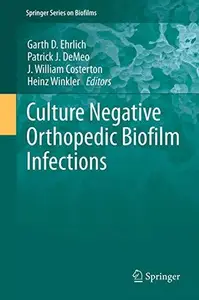 Free Download Culture Negative Orthopedic Biofilm Infections By G. D. Ehrlich, P. J. DeMeo, J. W. Costerton (auth.), Garth D. Ehrlich, Patrick J. DeMeo, J. William Costerton, Heinz Winkler (eds.) 2012 | 146 Pages | ISBN: 3642295533 | PDF | 3 MB During the recent transition between acute diseases caused by swarms of single planktonic bacteria, and chronic infections caused by bacteria growing in slime-enclosed biofilms, a general clinical consensus has emerged that pathologies with bacterial etiologies are frequently culture negative. Because biofilm infections now affect 17 million Americans per year (killing approximately 450,000), the suggestion that these common and lethal infections regularly go unnoticed by the only FDA-approved method for their detection and characterization is a matter of urgent concern. Biologically, we would expect that planktonic bacterial cells would colonize any new surface, including the surface of an agar plate, while the specialized sessile cells of a biofilm community would have no such proclivity. In the study of biofilm diseases ranging from otitis media to prostatitis, it was found that direct microscopy and DNA- and RNA-based molecular methods regularly document the presence of living bacteria in tissues and samples that are culture negative. The editors selected orthopedic biofilm infections as the subject of this book because these infections occur against a background of microbiological sterility in which modern molecular methods would be expected to find bacterial DNA, RNA-based microscopic methods would be expected to locate bacterial cells, and cultures would be negative. Moreover, in Orthopedics we find an already biofilm-adapted surgical group in which current strategies are based on the meticulous removal of compromised tissues, antibiotic options as based on high biofilm-killing local doses, and there are practical bedside strategies for dealing with biofilm infections. So here is where the new paradigm of biofilm infection meets the equally new paradigm of the culture negativity of biofilms, and this volume presents a conceptual synthesis that may soon combine the most effective molecular methods for the detection and identification of bacteria with a surgical discipline that is ready to help patients.  Free Download Rafał Wiśniewski, "Cultural Security: Theory - Selected Aspects - Case Studies " English | ISBN: 3631892497 | 2023 | 304 pages | PDF | 23 MB Elżbieta Szyszlak, PhD with habilitation in Political Sciences, Associate Professor at University of Wrocław. Rafał Wiśniewski, is Associate Professor at the Cardinal Stefan Wyszyński University in Warsaw. Radosław Zenderowski, full professor in Cardinal Stefan Wyszyński University in Warsaw.  Free Download Cultural Linguistics and the Social World by Judit Baranyiné Kóczy, Diana Prodanović Stankić English | 2024 | ISBN: 9819761913 | 351 Pages | True PDF | 8.85 MB 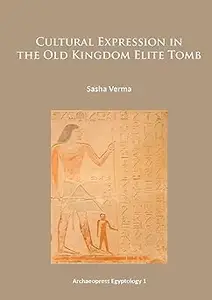 Free Download Sasha Verma, "Cultural Expression in the Old Kingdom Elite Tomb " English | ISBN: 1905739788 | 2014 | 294 pages | PDF | 21 MB Cultural Expression in the Old Kingdom Elite Tomb considers the material and immaterial culture left behind by the ancient Egyptian elite in their tombs starting some 5000 years ago. The book intends to understand this culture reflecting the 'intention' of the ancient Egyptians. All these 'intentions' are now inaccessible to us, a paradox indeed. The author starts by examining the ways in which other Egyptologists have understood tomb culture over the past century. Two main clusters of thought dominate the history of this topic, the literal and/or the symbolic meaning. The literal is a popular approach for the modern world; the symbolic encompasses the ancient Egyptians' ideas about the meaning of life in this and the next world, and metaphysical perfection. The author uses a third mid-way course between the literal and the symbolic; i.e. an attempt to study the evidence in its reality and to search for common, universal factors which may be present and which may aid understanding. The result is an inventory, analysis and synthesis of the core components of Egyptian cultural dynamics as reflected in the iconographic evolution of Old Kingdom elite tombs. New horizons are opened up for describing and interpreting cultural data of many different levels (identity, ideology as social layers, and static versus dynamic as cultural mechanisms). The work goes beyond mainstream Egyptology, because the findings, apart from a specific Egyptian core, also have universal implications since comparison with other cultures shows comparable phenomena. 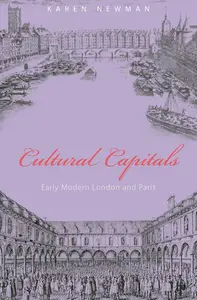 Free Download Cultural Capitals: Early Modern London and Paris by Karen Newman English | March 18, 2007 | ISBN: 0691127549, 069114110X | True EPUB | 224 pages | 28 MB Social theories of modernity focus on the nineteenth century as the period when Western Europe was transformed by urbanization. Cities became thriving metropolitan centers as a result of economic, political, and social changes wrought by the industrial revolution. In Cultural Capitals, Karen Newman demonstrates that speculation and capital, the commodity, the crowd, traffic, and the street, often thought to be historically specific to nineteenth-century urban culture, were in fact already at work in early modern London and Paris. 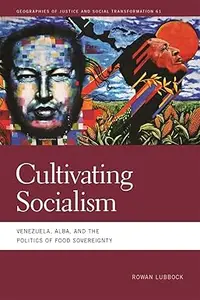 Free Download Cultivating Socialism: Venezuela, ALBA, and the Politics of Food Sovereignty by Rowan Lubbock English | 2024 | ISBN: 0820357952 | 232 Pages | PDF | 3.75 MB 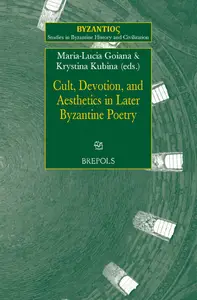 Free Download Cult, Devotion, and Aesthetics in Later Byzantine Poetry Maria-Lucia Goiana, Krystina Kubina English | 2024 | ISBN: 9782503611723 | 249 Pages | True PDF | 9 MB 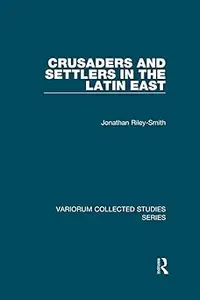 Free Download Jonathan Riley-Smith, "Crusaders and Settlers in the Latin East " English | ISBN: 1138382418 | 2019 | 378 pages | EPUB | 3 MB The studies here reflect Jonathan Riley-Smith's work as a historian, which began with research on the history of the military orders, the specific focus of the third section here. Out of this grew the concerns covered in the previous sections: an interest in the political and constitutional history of the kingdom of Jerusalem and the relations of the western settlers with the indigenous population of Palestine and Syria; the theory of crusading, involving research on theology and canon law, and the rôle of the popes as preachers, and at the same time detailed consideration of the responses of lay men and women to the ideas that were being presented to them. The two final papers explore some of the implications of crusading ideology and mythology in the modern world.  Free Download Benjamin Z. Kedar, "Crusaders and Franks " English | ISBN: 081536685X | 2017 | 368 pages | EPUB | 7 MB While research on the crusades tends increasingly to bifurcate into study of the crusade idea and the crusading expeditions, and study of the Frankish states the crusaders established in the Levant, Benjamin Kedar confirms-through the articles reproduced in this latest selection of his articles-his adherence to the school that endeavours to deal with both branches of research. Of the ten studies that deal with the crusading expeditions, one examines the maps that might have been available to the First Crusaders and their Muslim opponents, another discusses in detail the Jerusalem massacre of July 1099 and its place in Western historiography down to our days, a third sheds light on the largely neglected doings of the Fourth Crusaders who decided to sail to Acre rather than to Constantinople, while a fourth exposes unknown features of the well-known sculpture of the returning crusader-most probably Count Hugh I of Vaudémont- who is embracing his wife. Of the ten studies that deal with the Frankish Levant, one proposes a hypothesis on the composition stages of William of Tyre's chronicle, another provides new evidence on the Latin hermits who chose to live in the Frankish states, a third examines the catalogue of the library of the cathedral of Nazareth, while a fourth calls attention to convergences of Eastern Christians, Muslims and Franks in sacred spaces and offers a typology of such events, and a fifth proposes a methodology for the identification of trans-cultural borrowing in the Frankish Levant. |